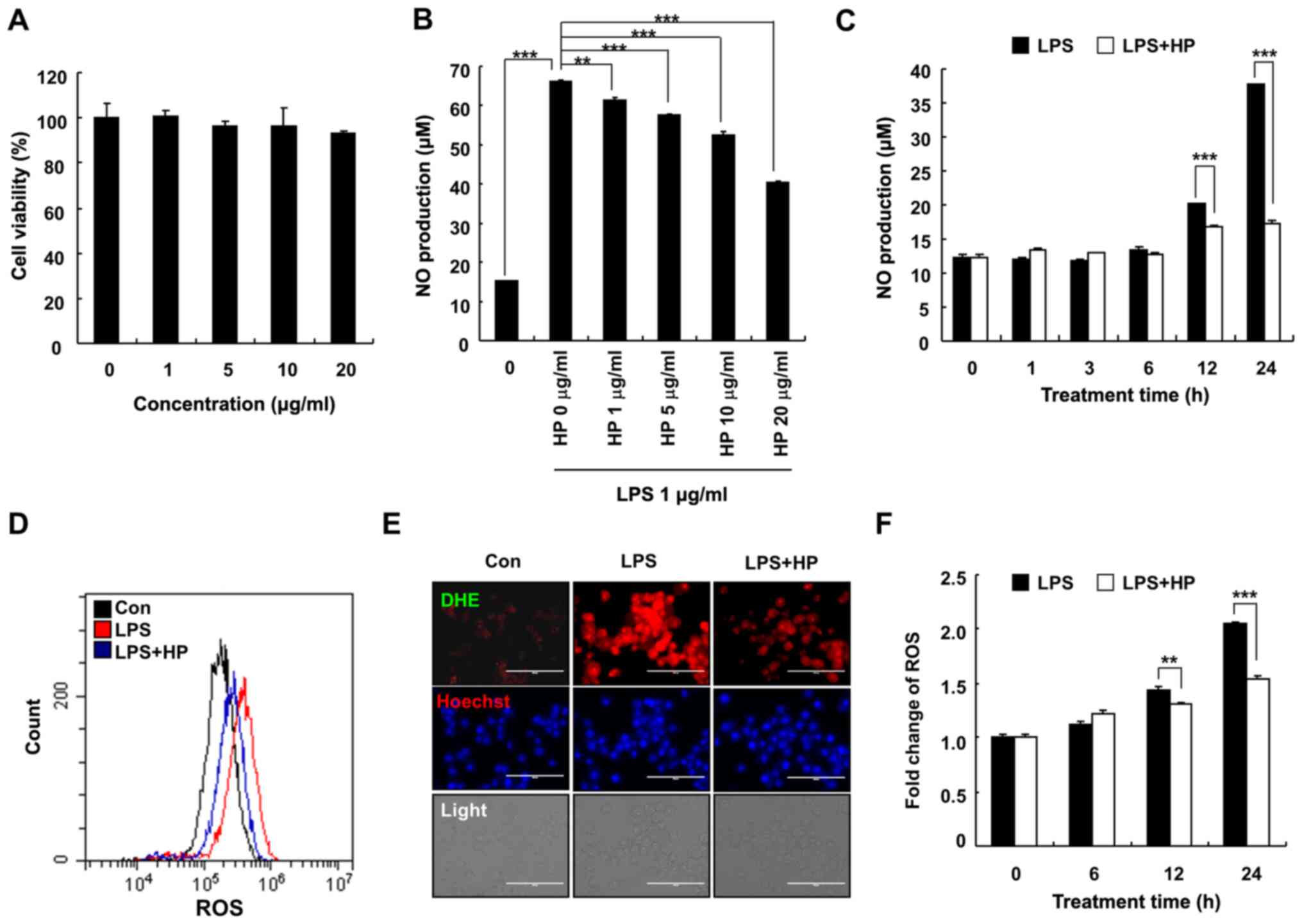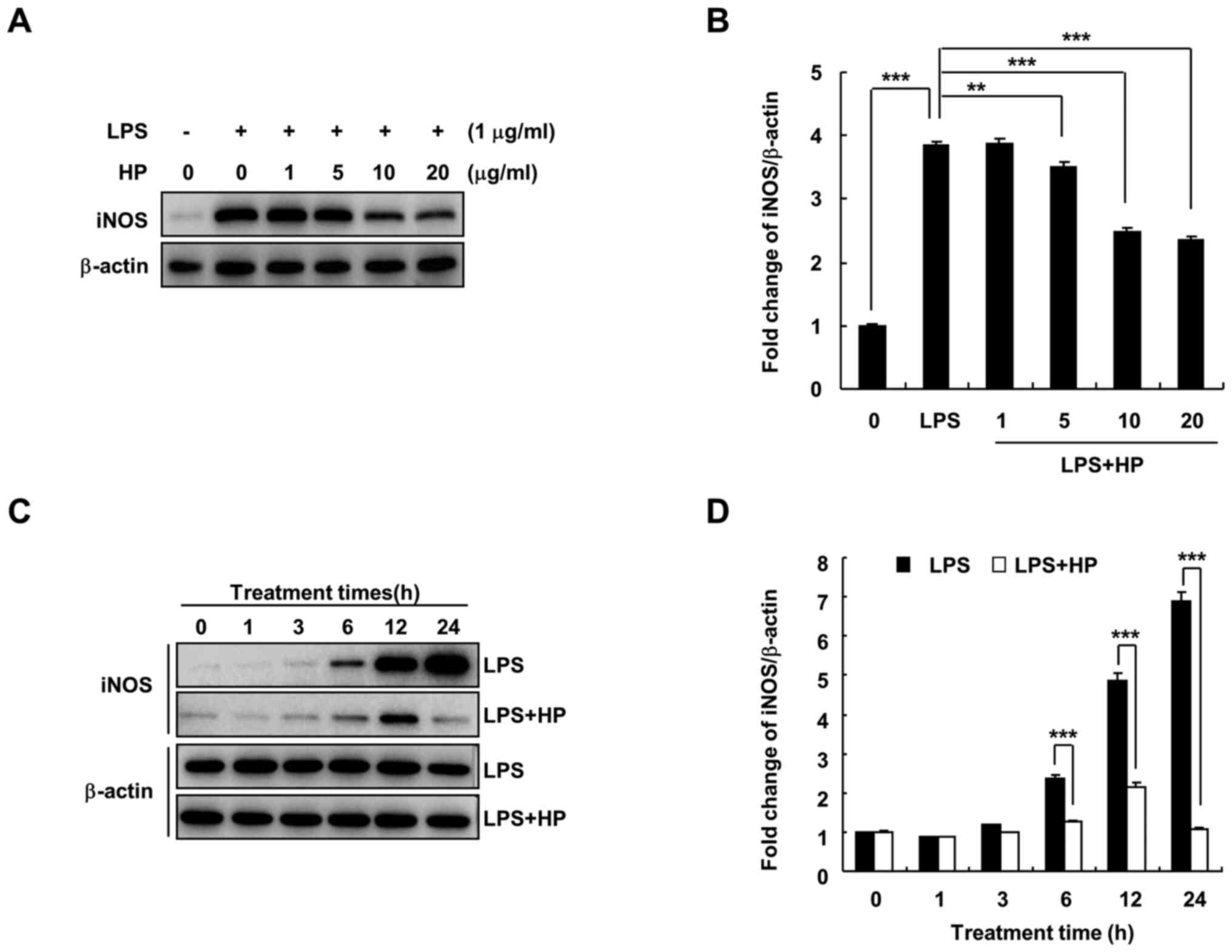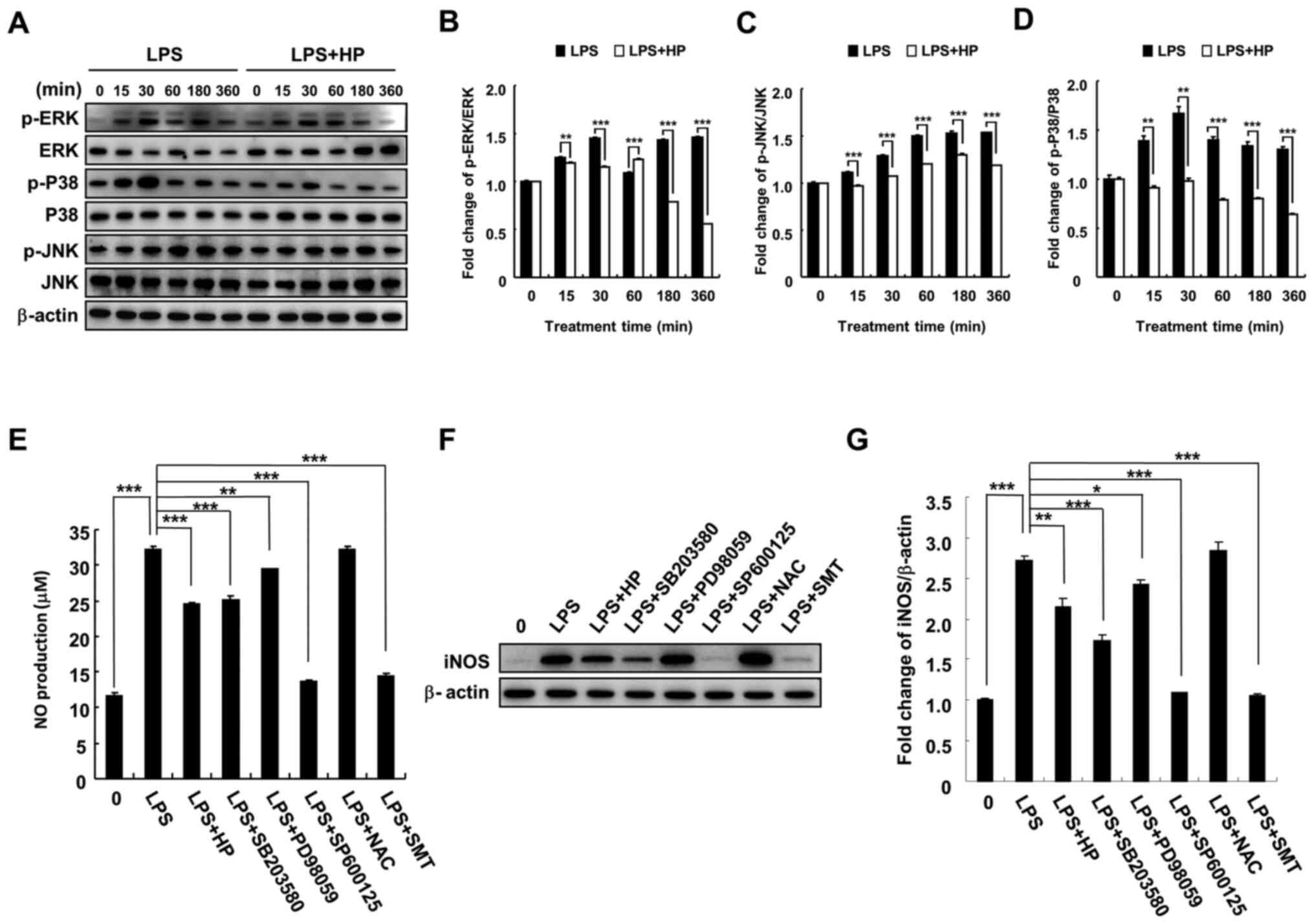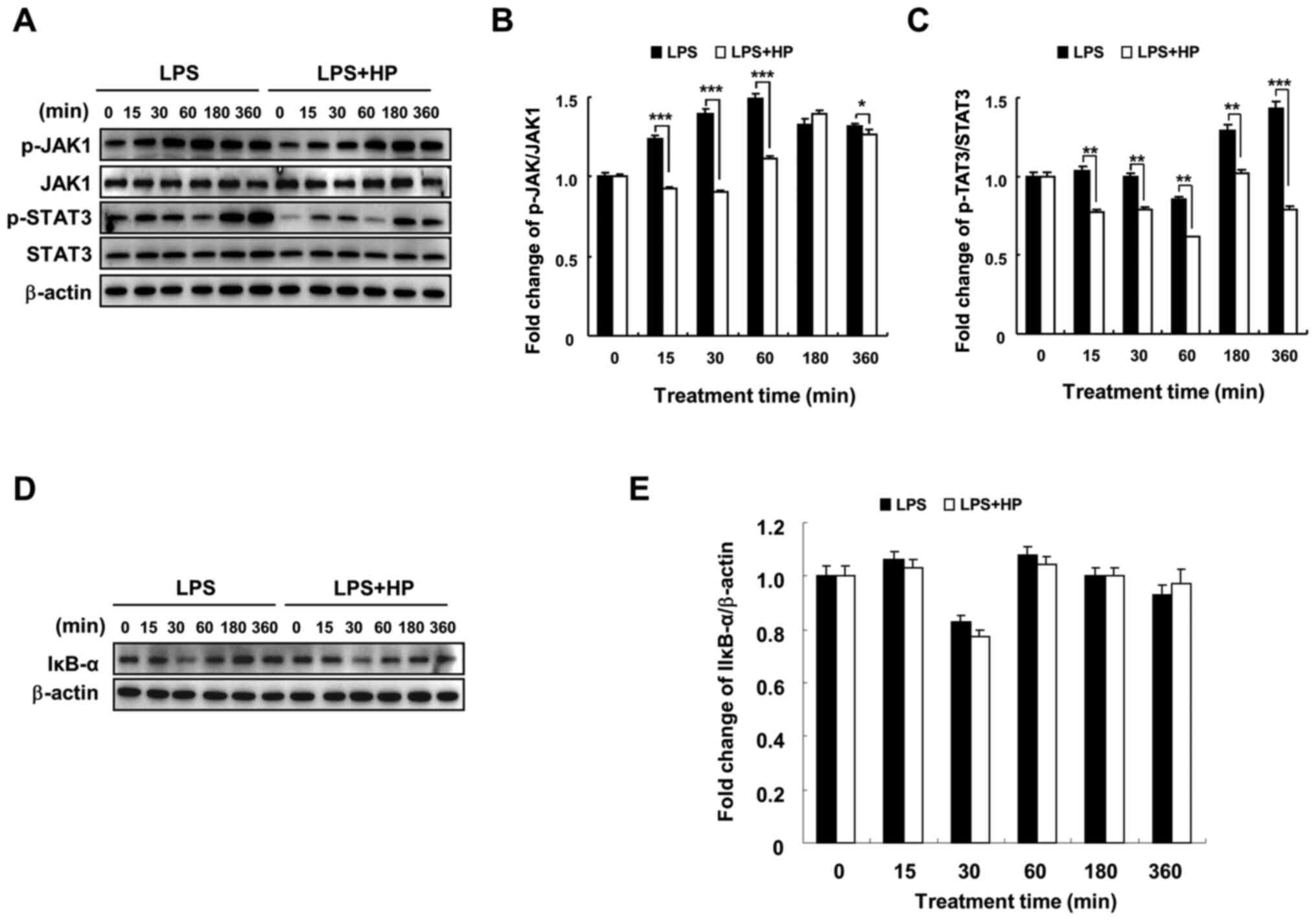|
1
|
DiSabato DJ, Quan N and Godbout JP:
Neuroinflammation: The devil is in the details. J Neurochem. 139
(Suppl 2):S136–S153. 2016.PubMed/NCBI View Article : Google Scholar
|
|
2
|
Walker FO: Huntington's disease. Lancet.
369:218–228. 2007.PubMed/NCBI View Article : Google Scholar
|
|
3
|
Wang J, He C, Wu WY, Chen F, Wu YY, Li WZ,
Chen HQ and Yin YY: Biochanin A protects dopaminergic neurons
against lipopolysaccharide-induced damage and oxidative stress in a
rat model of Parkinson's disease. Pharmacol Biochem Behav.
138:96–103. 2015.PubMed/NCBI View Article : Google Scholar
|
|
4
|
Estes ML and McAllister AK: Maternal
immune activation: Implications for neuropsychiatric disorders.
Science. 353:772–777. 2016.PubMed/NCBI View Article : Google Scholar
|
|
5
|
Greenhalgh AD, David S and Bennett FC:
Immune cell regulation of glia during CNS injury and disease. Nat
Rev Neurosci. 21:139–152. 2020.PubMed/NCBI View Article : Google Scholar
|
|
6
|
Streit WJ: Microglia as neuroprotective,
immunocompetent cells of the CNS. Glia. 40:133–139. 2002.PubMed/NCBI View Article : Google Scholar
|
|
7
|
Sun HN, Jin MH, Han B, Feng L, Han YH,
Shen GN, Yu YZ, Jin CH, Lian ZX, Lee DS, et al:
16α,17α-epoxypregnenolone-20-oxime prevent LPS-induced NO
production and iNOS expression in BV-2 microglial cells by
inhibiting JNK phosphorylation. Biol Pharm Bull. 37:1096–1102.
2014.PubMed/NCBI View Article : Google Scholar
|
|
8
|
Calabrese V, Boyd-Kimball D, Scapagnini G
and Butterfield DA: Nitric oxide and cellular stress response in
brain aging and neurodegenerative disorders: The role of vitagenes.
In Vivo. 18:245–267. 2004.PubMed/NCBI
|
|
9
|
Hannibal L: Nitric oxide homeostasis in
neurodegenerative diseases. Curr Alzheimer Res. 13:135–149.
2016.PubMed/NCBI View Article : Google Scholar
|
|
10
|
Meini A, Sticozzi C, Massai L and Palmi M:
A nitric oxide/Ca(2+)/calmodulin/ERK1/2 mitogen-activated protein
kinase pathway is involved in the mitogenic effect of IL-1beta in
human astrocytoma cells. Br J Pharmacol. 153:1706–1717.
2008.PubMed/NCBI View Article : Google Scholar
|
|
11
|
Ijomone OM, Aluko OM, Okoh COA and
Ebokaiwe AP: Nω-nitro-L-arginine, a nitric oxide synthase
inhibitor, attenuates nickel-induced neurotoxicity. Drug Chem
Toxicol. 1–10. 2021.PubMed/NCBI View Article : Google Scholar
|
|
12
|
Majewski M, Kozlowska A, Thoene M,
Lepiarczyk E and Grzegorzewski WJ: Overview of the role of vitamins
and minerals on the kynurenine pathway in health and disease. J
Physiol Pharmacol. 67:3–19. 2016.PubMed/NCBI
|
|
13
|
Broom L, Marinova-Mutafchieva L, Sadeghian
M, Davis JB, Medhurst AD and Dexter DT: Neuroprotection by the
selective iNOS inhibitor GW274150 in a model of Parkinson disease.
Free Radic Biol Med. 50:633–640. 2011.PubMed/NCBI View Article : Google Scholar
|
|
14
|
Edwards RL, Lewis DG and Wilson DV: 983.
Constituents of the higher fungi. Part I. Hispidin, a new
4-hydroxy-6-styryl-2-pyrone from polyporus hispidus (Bull.) Fr. J
Chem Soc: 4995-5002, 1961.
|
|
15
|
Edwards RL and Wilson DV: 984.
Constituents of the higher fungi. Part II. The synthesis of
hispidin. J Chem Soc (Resumed). 5003–5004. 1961.
|
|
16
|
Chandimali N, Huynh DL, Jin WY and Kwon T:
Combination effects of hispidin and gemcitabine via inhibition of
stemness in pancreatic cancer stem cells. Anticancer Res.
38:3967–3975. 2018.PubMed/NCBI View Article : Google Scholar
|
|
17
|
Han YH, Chen DQ, Jin MH, Jin YH, Li J,
Shen GN, Li WL, Gong YX, Mao YY, Xie DP, et al: Anti-inflammatory
effect of hispidin on LPS induced macrophage inflammation through
MAPK and JAK1/STAT3 signaling pathways. Appl Biol Chem.
63(21)2020.
|
|
18
|
Oh YC, Li W and Choi JG: Saussureae radix
attenuates neuroinflammation in LPS-stimulated mouse BV2 microglia
via HO-1/Nrf-2 induction and inflammatory pathway inhibition.
Mediators Inflamm. 2021(6687089)2021.PubMed/NCBI View Article : Google Scholar
|
|
19
|
Takata K, Kitamura Y, Saeki M, Terada M,
Kagitani S, Kitamura R, Fujikawa Y, Maelicke A, Tomimoto H,
Taniguchi T and Shimohama S: Galantamine-induced amyloid-{beta}
clearance mediated via stimulation of microglial nicotinic
acetylcholine receptors. J Biol Chem. 285:40180–40191.
2010.PubMed/NCBI View Article : Google Scholar
|
|
20
|
Lawson LJ, Perry VH, Dri P and Gordon S:
Heterogeneity in the distribution and morphology of microglia in
the normal adult mouse brain. Neuroscience. 39:151–170.
1990.PubMed/NCBI View Article : Google Scholar
|
|
21
|
Yang I, Han SJ, Kaur G, Crane C and Parsa
AT: The role of microglia in central nervous system immunity and
glioma immunology. J Clin Neurosci. 17:6–10. 2010.PubMed/NCBI View Article : Google Scholar
|
|
22
|
Kaur D, Sharma V and Deshmukh R:
Activation of microglia and astrocytes: A roadway to
neuroinflammation and Alzheimer's disease. Inflammopharmacology.
27:663–677. 2019.PubMed/NCBI View Article : Google Scholar
|
|
23
|
González-Scarano F and Baltuch G:
Microglia as mediators of inflammatory and degenerative diseases.
Annu Rev Neurosci. 22:219–240. 1999.PubMed/NCBI View Article : Google Scholar
|
|
24
|
Voet S, Srinivasan S, Lamkanfi M and van
Loo G: Inflammasomes in neuroinflammatory and neurodegenerative
diseases. EMBO Mol Med. 11(e10248)2019.PubMed/NCBI View Article : Google Scholar
|
|
25
|
Chen K, Northington FJ and Martin LJ:
Inducible nitric oxide synthase is present in motor neuron
mitochondria and Schwann cells and contributes to disease
mechanisms in ALS mice. Brain Struct Funct. 214:219–234.
2010.PubMed/NCBI View Article : Google Scholar
|
|
26
|
Kelly MEM and Barnes S: Physiology and
pathophysiology of nitric oxide in the retina. Neuroscientist.
3:357–360. 1997.
|
|
27
|
Marks JD and Schreiber MD: Inhaled nitric
oxide and neuroprotection in preterm infants. Clin Perinatol.
35:793–807. 2008.PubMed/NCBI View Article : Google Scholar
|
|
28
|
Ignarro LJ, Cirino G, Casini A and Napoli
C: Nitric oxide as a signaling molecule in the vascular system: An
overview. J Cardiovasc Pharmacol. 34:879–886. 1999.PubMed/NCBI View Article : Google Scholar
|
|
29
|
Jaffrey SR and Snyder SH: Nitric oxide: A
neural messenger. Annu Rev Cell Dev Biol. 11:417–440.
1995.PubMed/NCBI View Article : Google Scholar
|
|
30
|
Tramutola A, Lanzillotta C, Perluigi M and
Butterfield DA: Oxidative stress, protein modification and
Alzheimer disease. Brain Res Bull. 133:88–96. 2017.PubMed/NCBI View Article : Google Scholar
|
|
31
|
Gjoneska E, Pfenning AR, Mathys H, Quon G,
Kundaje A, Tsai LH and Kellis M: Conserved epigenomic signals in
mice and humans reveal immune basis of Alzheimer's disease. Nature.
518:365–369. 2015.PubMed/NCBI View Article : Google Scholar
|
|
32
|
Henkel JS, Beers DR, Zhao W and Appel SH:
Microglia in ALS: The good, the bad, and the resting. J Neuroimmune
Pharmacol. 4:389–398. 2009.PubMed/NCBI View Article : Google Scholar
|
|
33
|
Shaw PR and Haydar TF: Mitigating
cognitive deficits in down syndrome by managing microglia
activation. Neuron. 108:799–800. 2020.PubMed/NCBI View Article : Google Scholar
|
|
34
|
Ren Y, Jiang J, Jiang W, Zhou X, Lu W,
Wang J and Luo Y: Spata2 knockdown exacerbates brain inflammation
via NF-κB/P38MAPK signaling and NLRP3 inflammasome activation in
cerebral ischemia/reperfusion rats. Neurochem Res: Jun1, 2021 (Epub
ahead of print). doi: 10.1007/s11064-021-03360-8.
|
|
35
|
Law A, Gauthier S and Quirion R: Say NO to
Alzheimer's disease: The putative links between nitric oxide and
dementia of the Alzheimer's type. Brain Res Brain Res Rev.
35:73–96. 2001.PubMed/NCBI View Article : Google Scholar
|
|
36
|
Estévez AG and Jordán J: Nitric oxide and
superoxide, a deadly cocktail. Ann N Y Acad Sci. 962:207–211.
2002.PubMed/NCBI View Article : Google Scholar
|
|
37
|
Halliwell B and Gutteridge JM: Oxygen
toxicity, oxygen radicals, transition metals and disease. Biochem
J. 219:1–14. 1984.PubMed/NCBI View Article : Google Scholar
|
|
38
|
Liu B and Hong JS: Role of microglia in
inflammation-mediated neurodegenerative diseases: Mechanisms and
strategies for therapeutic intervention. J Pharmacol Exp Ther.
304:1–7. 2003.PubMed/NCBI View Article : Google Scholar
|
|
39
|
Wang T, Qin L, Liu B, Liu Y, Wilson B,
Eling TE, Langenbach R, Taniura S and Hong JS: Role of reactive
oxygen species in LPS-induced production of prostaglandin E2 in
microglia. J Neurochem. 88:939–947. 2004.PubMed/NCBI View Article : Google Scholar
|
|
40
|
Farber JL: Mechanisms of cell injury by
activated oxygen species. Environ Health Perspect. 102 (Suppl
10):S17–S24. 1994.PubMed/NCBI View Article : Google Scholar
|
|
41
|
You MM, Chen YF, Pan YM, Liu YC, Tu J,
Wang K and Hu FL: Royal jelly attenuates LPS-induced inflammation
in BV-2 microglial cells through modulating NF-κB and p38/JNK
signaling pathways. Mediators Inflamm. 2018(7834381)2018.PubMed/NCBI View Article : Google Scholar
|
|
42
|
Stephenson J, Nutma E, van der Valk P and
Amor S: Inflammation in CNS neurodegenerative diseases. Immunology.
154:204–219. 2018.PubMed/NCBI View Article : Google Scholar
|
|
43
|
Solt LA and May MJ: The IkappaB kinase
complex: Master regulator of NF-kappaB signaling. Immunol Res.
42:3–18. 2008.PubMed/NCBI View Article : Google Scholar
|
|
44
|
Chen J, Yin W, Tu Y, Wang S, Yang X, Chen
Q, Zhang X, Han Y and Pi R: L-F001, a novel multifunctional ROCK
inhibitor, suppresses neuroinflammation in vitro and in vivo:
Involvement of NF-κB inhibition and Nrf2 pathway activation. Eur J
Pharmacol. 806:1–9. 2017.PubMed/NCBI View Article : Google Scholar
|
|
45
|
Karin M and Delhase M: The I kappa B
kinase (IKK) and NF-kappa B: Key elements of proinflammatory
signalling. Semin Immunol. 12:85–98. 2000.PubMed/NCBI View Article : Google Scholar
|
|
46
|
Heinrich PC, Behrmann I, MüLler-Newen G,
Schaper F and Graeve L: Interleukin-6-type cytokine signalling
through the gp130/Jak/STAT pathway. Biochem J. 334:297–314.
1998.PubMed/NCBI View Article : Google Scholar
|
|
47
|
Gonindard C, Bergonzi C, Denier C,
Sergheraert C, Klaebe A, Chavant L and Hollande E: Synthetic
hispidin, a PKC inhibitor, is more cytotoxic toward cancer cells
than normal cells in vitro. Cell Biol Toxicol. 13:141–153.
1997.PubMed/NCBI View Article : Google Scholar
|
|
48
|
Dann SG, Golas J, Miranda M, Shi C, Wu J,
Jin G, Rosfjord E, Upeslacis E and Klippel A: p120 catenin is a key
effector of a Ras-PKCε oncogenic signaling axis. Oncogene.
33:1385–1394. 2014.PubMed/NCBI View Article : Google Scholar
|
|
49
|
van der Vorst EPC, Theodorou K, Wu Y,
Hoeksema MA, Goossens P, Bursill CA, Aliyev T, Huitema LFA, Tas SW,
Wolfs IMJ, et al: High-density lipoproteins exert pro-inflammatory
effects on macrophages via passive cholesterol depletion and
PKC-NF-κB/STAT1-IRF1 signaling. Cell Metab. 25:197–207.
2017.PubMed/NCBI View Article : Google Scholar
|
|
50
|
Wu WY, Wu YY, Huang H, He C, Li WZ, Wang
HL, Chen HQ and Yin YY: Biochanin A attenuates LPS-induced
pro-inflammatory responses and inhibits the activation of the MAPK
pathway in BV2 microglial cells. Int J Mol Med. 35:391–398.
2015.PubMed/NCBI View Article : Google Scholar
|
|
51
|
Cano E and Mahadevan LC: Parallel signal
processing among mammalian MAPKs. Trends Biochem Sci. 20:117–122.
1995.PubMed/NCBI View Article : Google Scholar
|


















